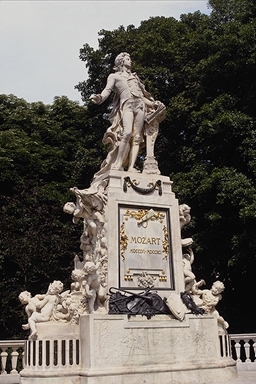Soundtracks:
Amadeus
Under Suspicion





|
 Requiem
K626 Requiem
K626
Many legends and fantasies are related to the Requiem Mozart wrote near
to his own death. There is a fact that the requiem was ordered by a mysterious
client whose name is unknown. Mozart left no will or a grave, said no famous
last words - all these facts made it difficult for music lovers to accept
the loss of a musical genius, and on top of everything else - so young,
only 35 years old.
It turns out that most of the common facts about the Requiem are not
really true:
The person who ordered the requiem was a count, who made the order secretly,
with the intention to present it as his own work (apparently he had done
so before). While writing the requiem, Mozart understood that he was composing
his own requiem. He never got to finish it, and only two of its movements
have been completed. The rest were completed using the first drafts he
left, by his student Süssmayr, and in spite of the excellent work
the latter did, the differences in level of composition are evident. Antonio
Salieri, who was accused in various contexts as being involved in Mozart's
death, had no contact with the genius's demise, as facts show.
The Requiem does not resemble Mozart's other religious work. It is written
in a way that reminds us more of J. S. Bach's devotional writing. In that
sense, Mozart succeeded to elevate himself above his own era, and wrote
a piece that demonstrates how limitless he was in style, time, expression
and character. Eternity was his home court.
|